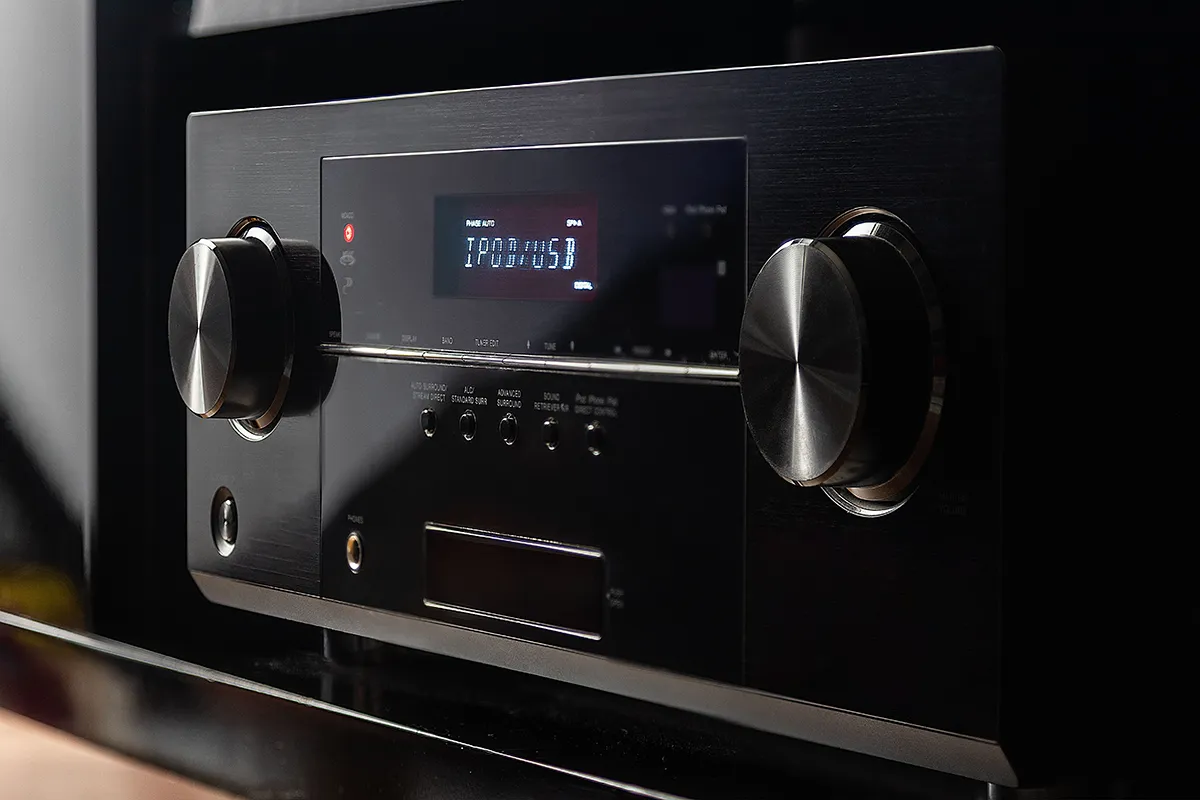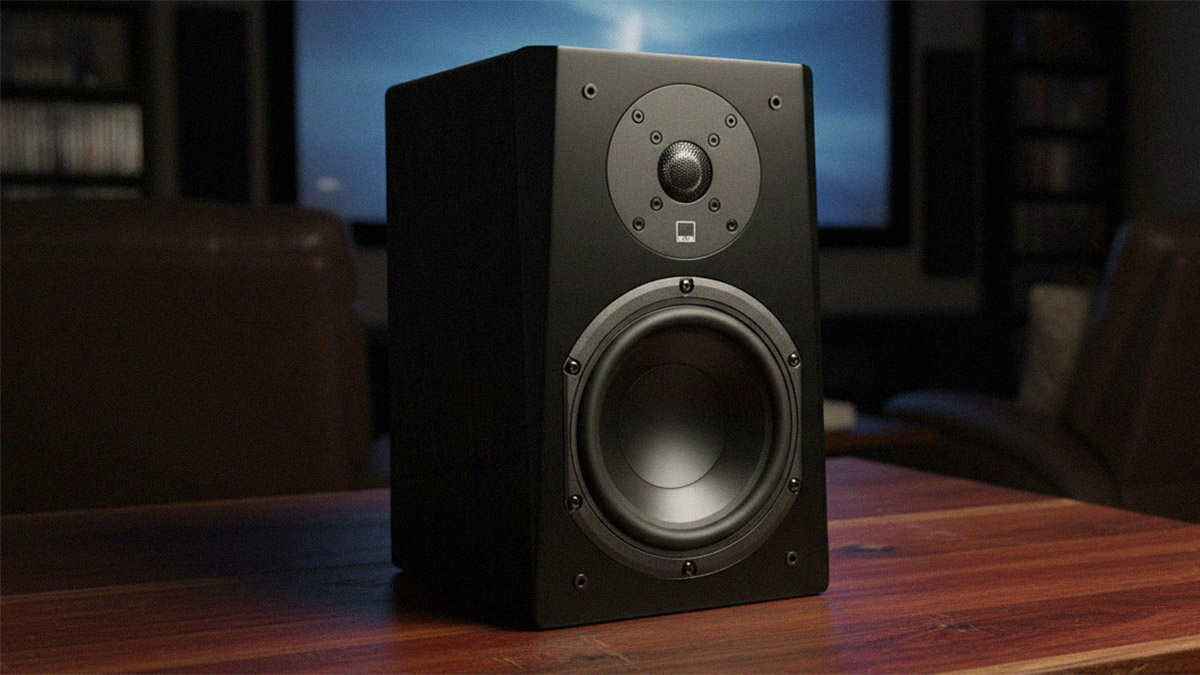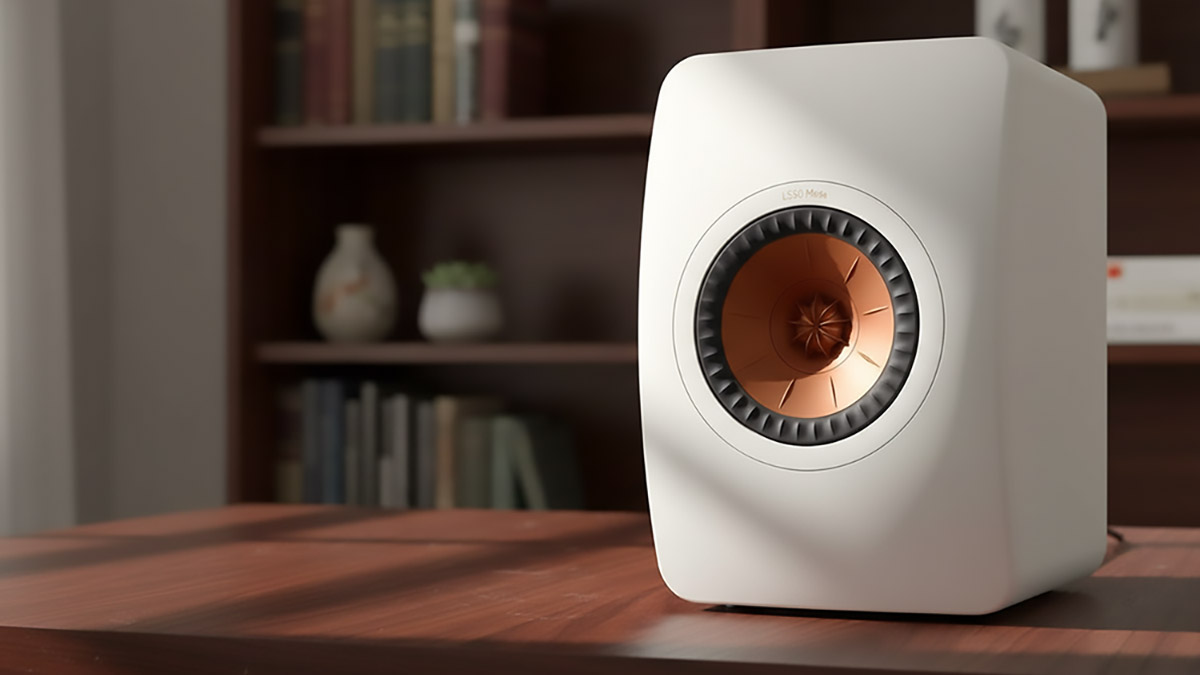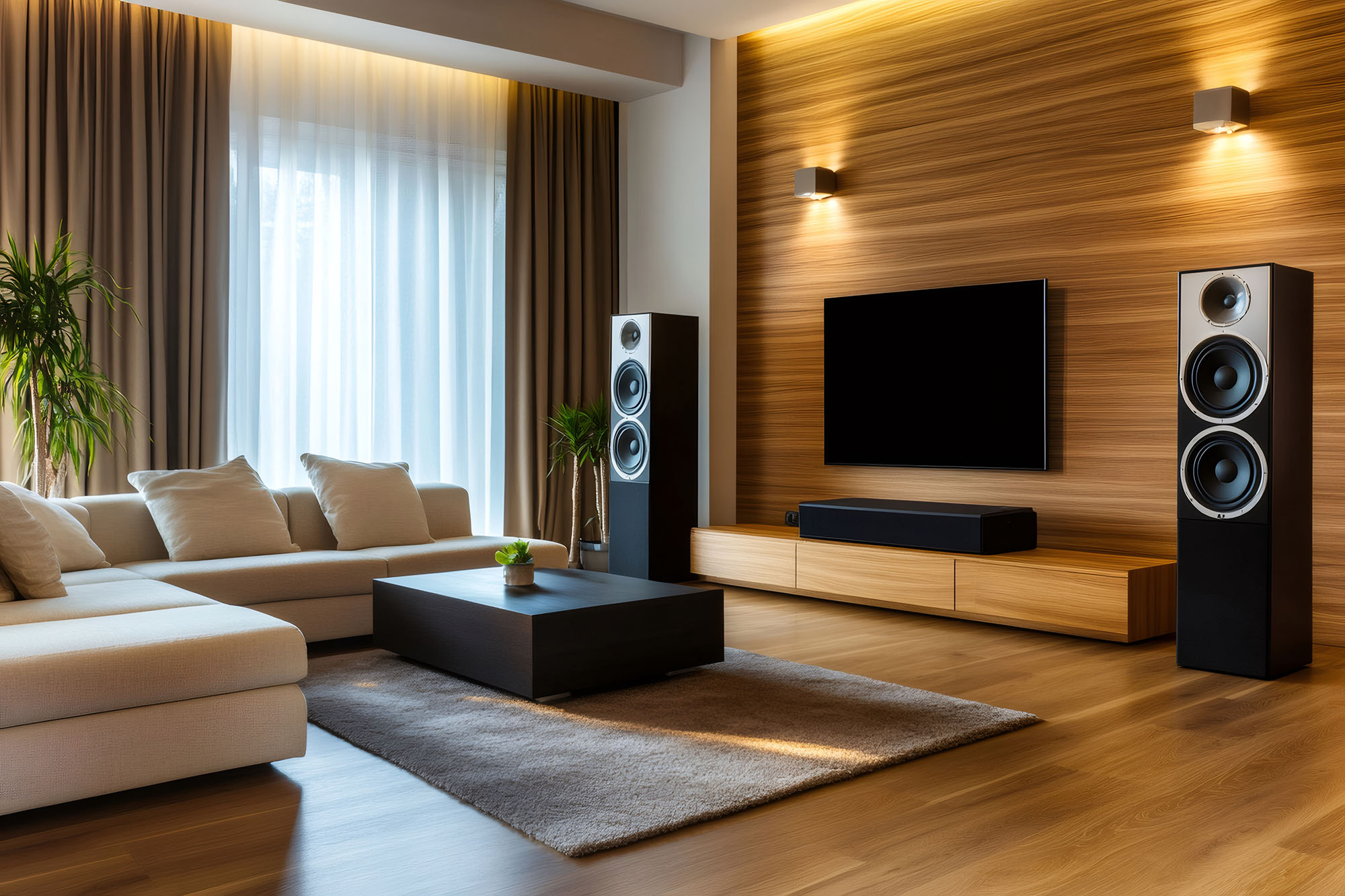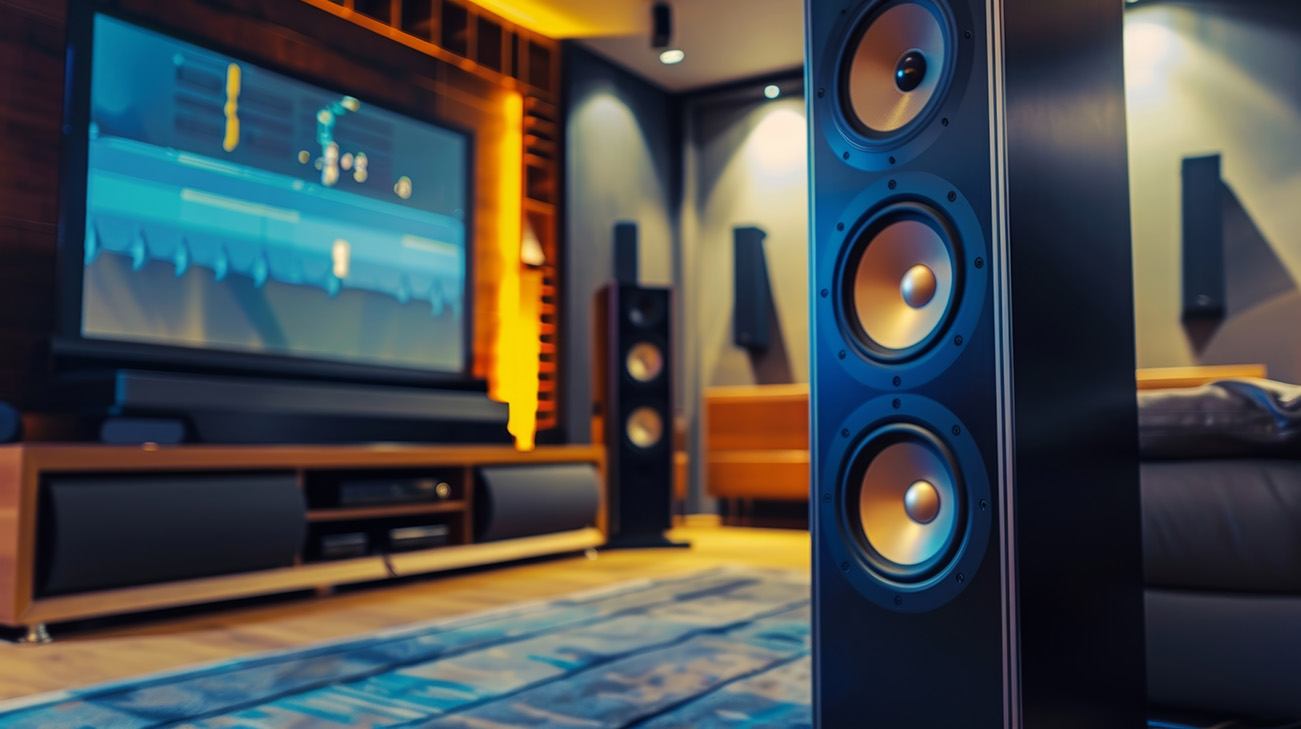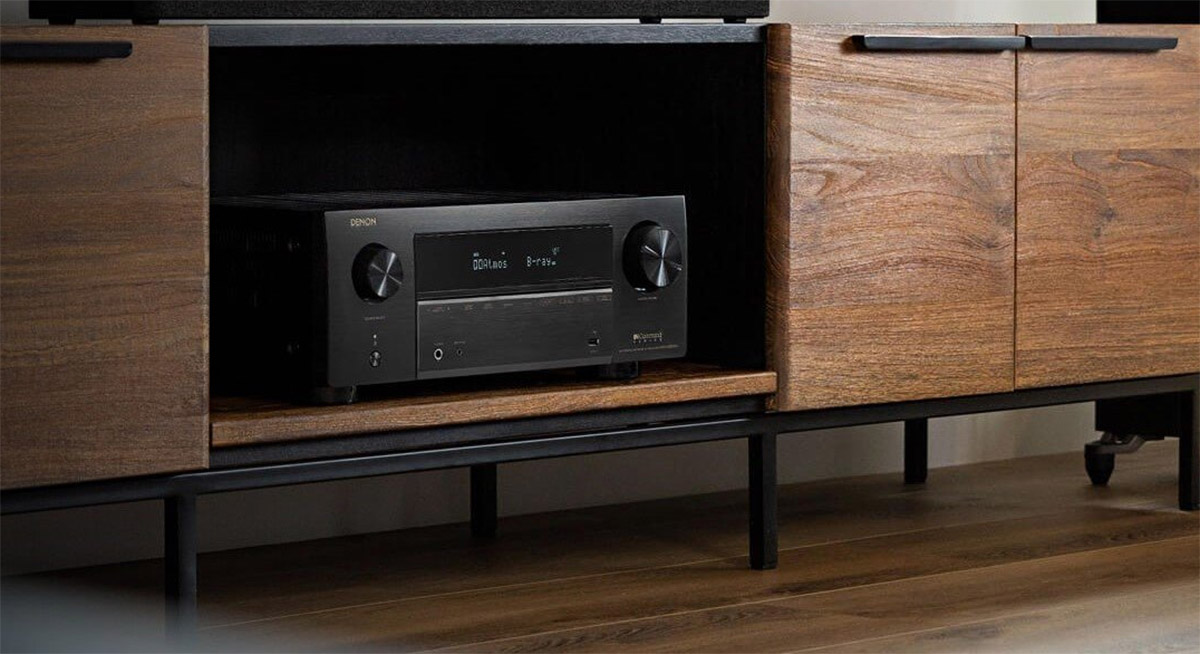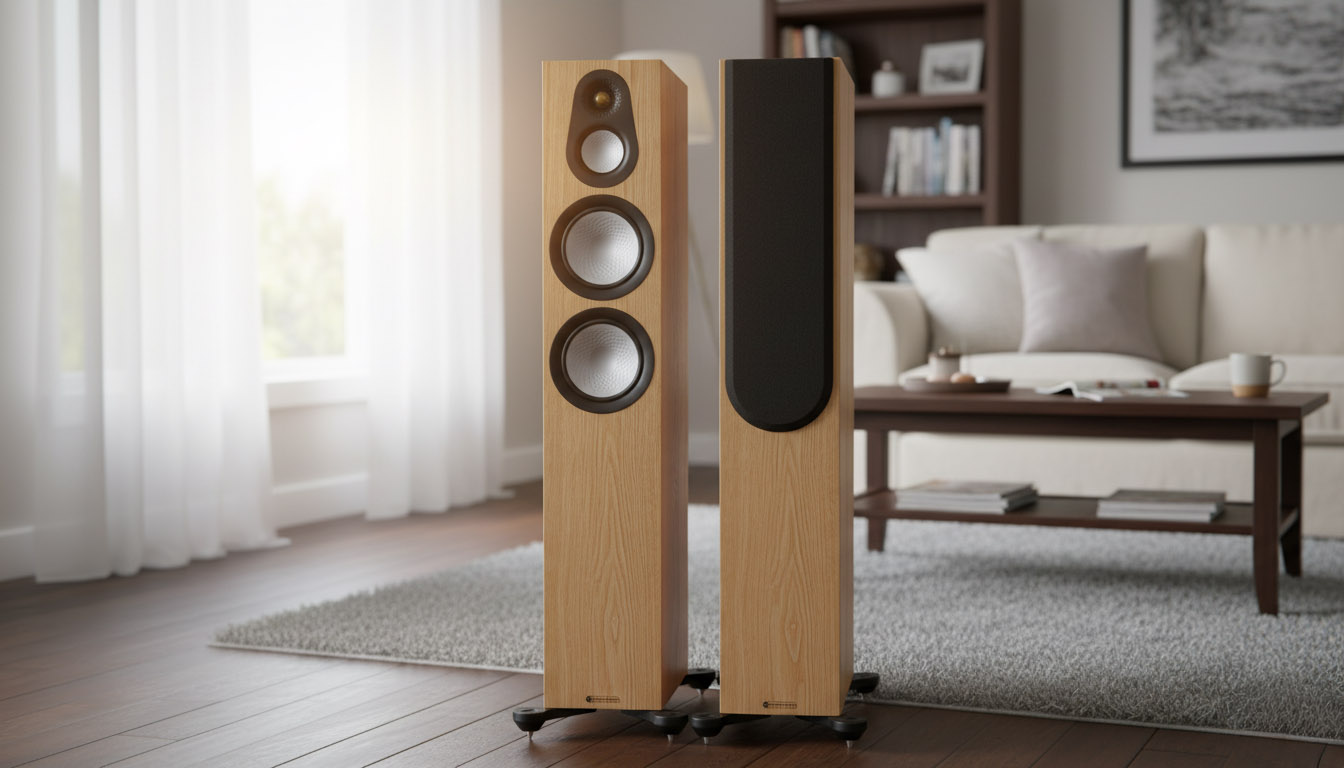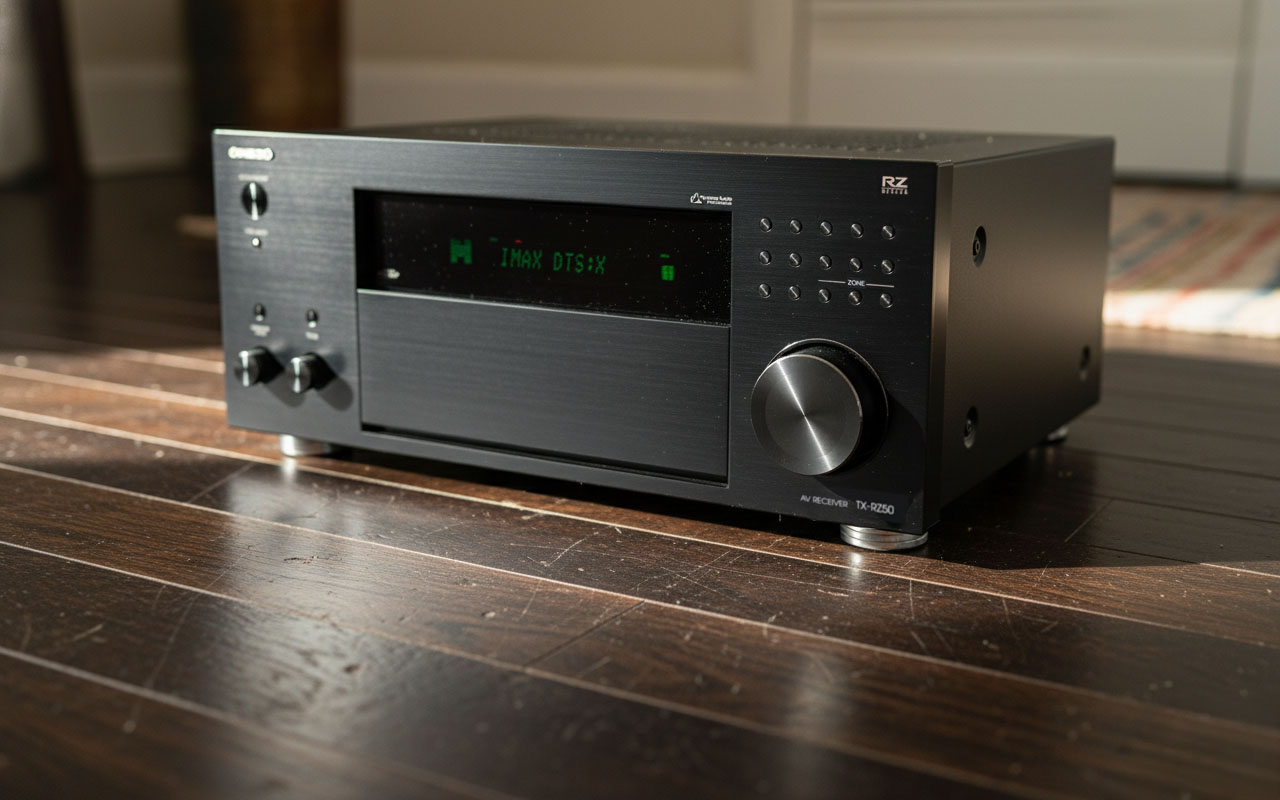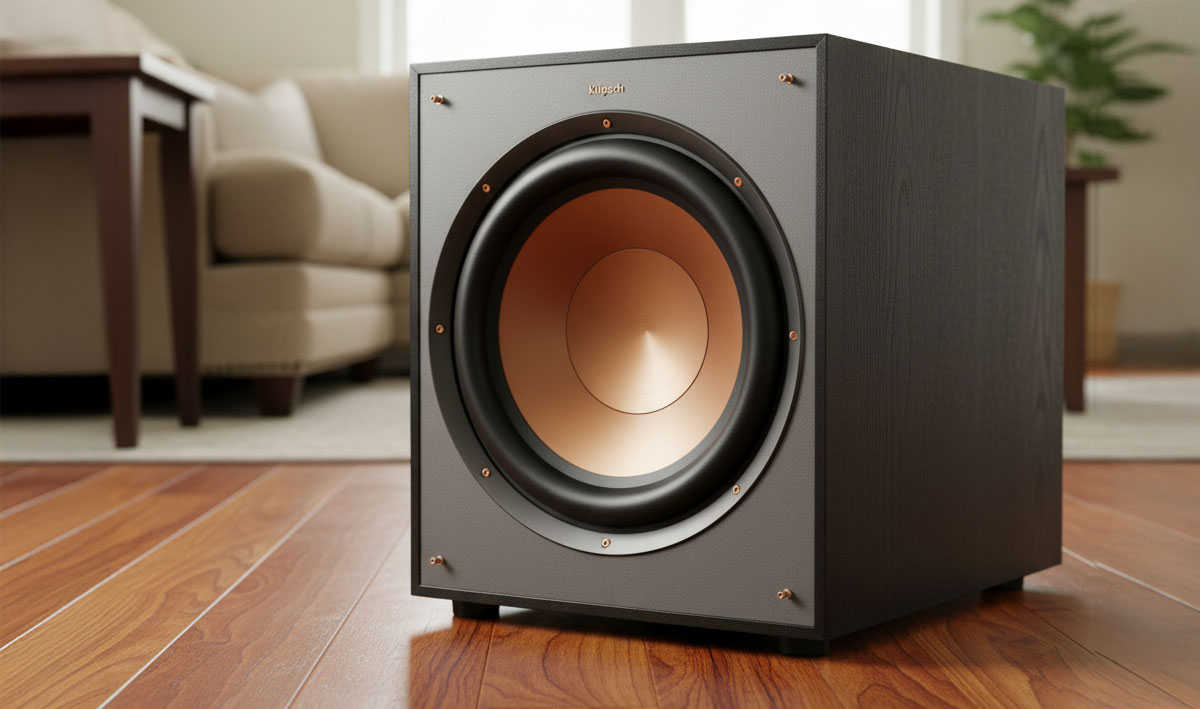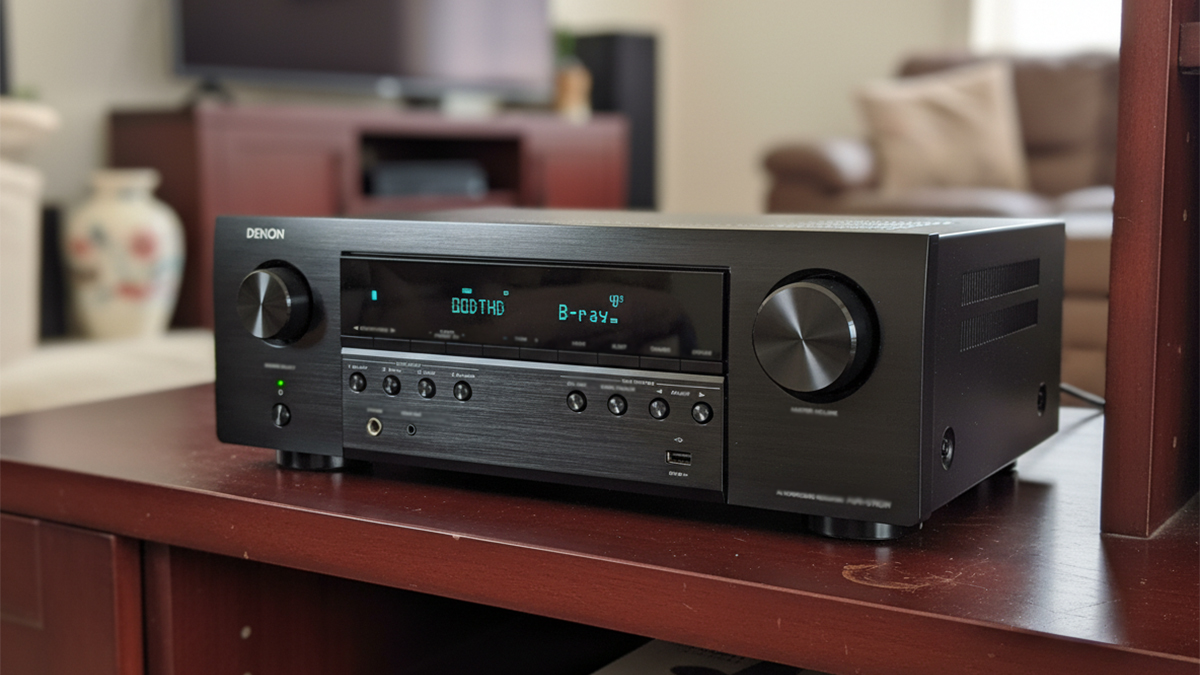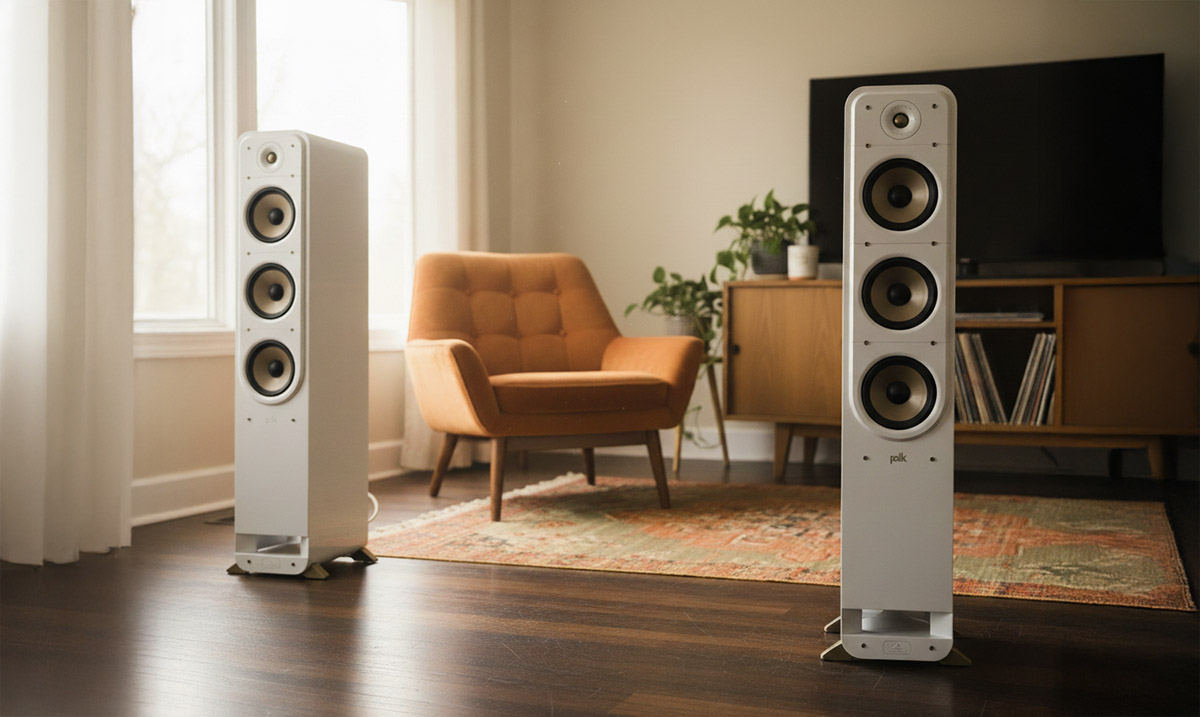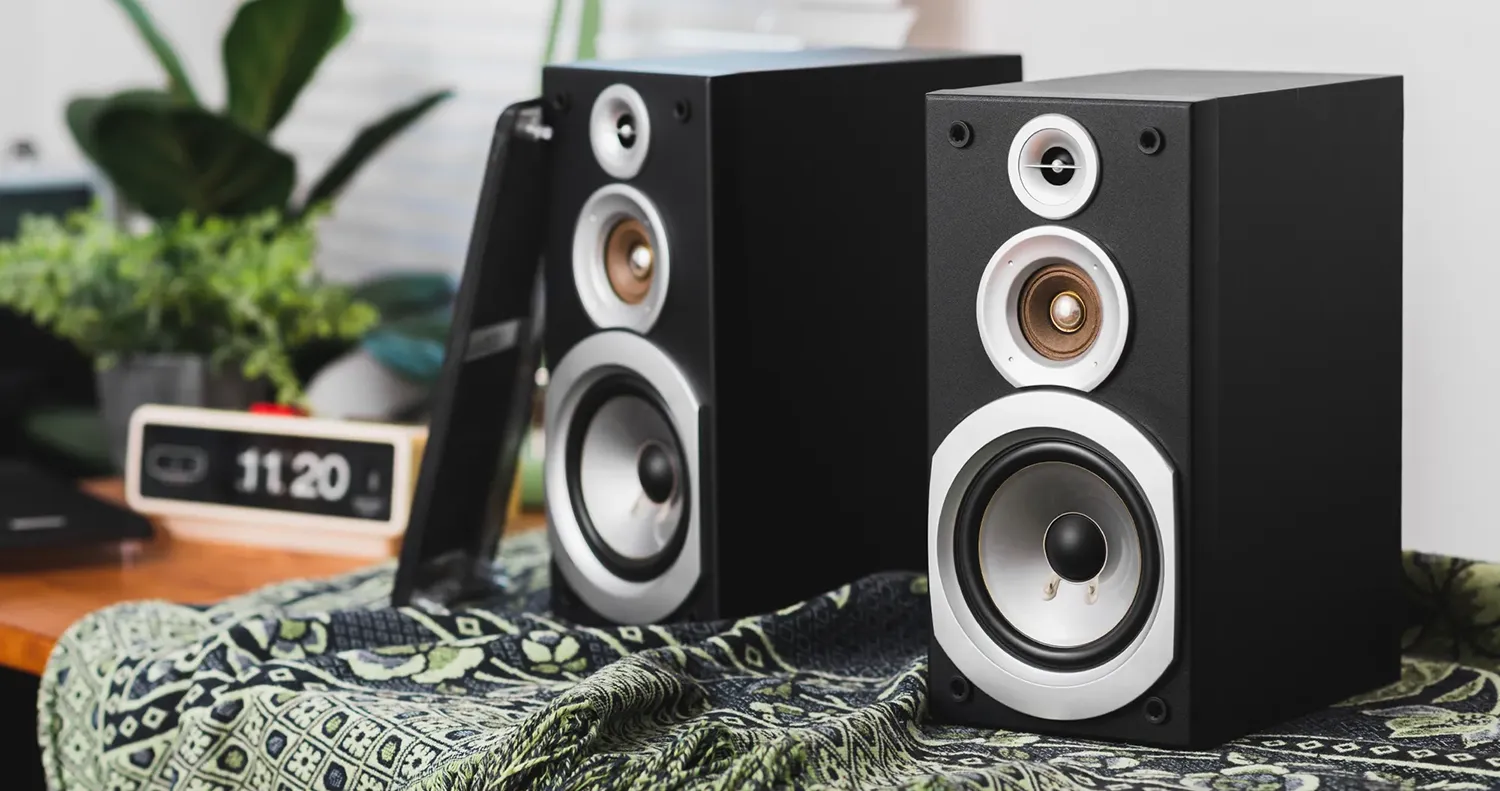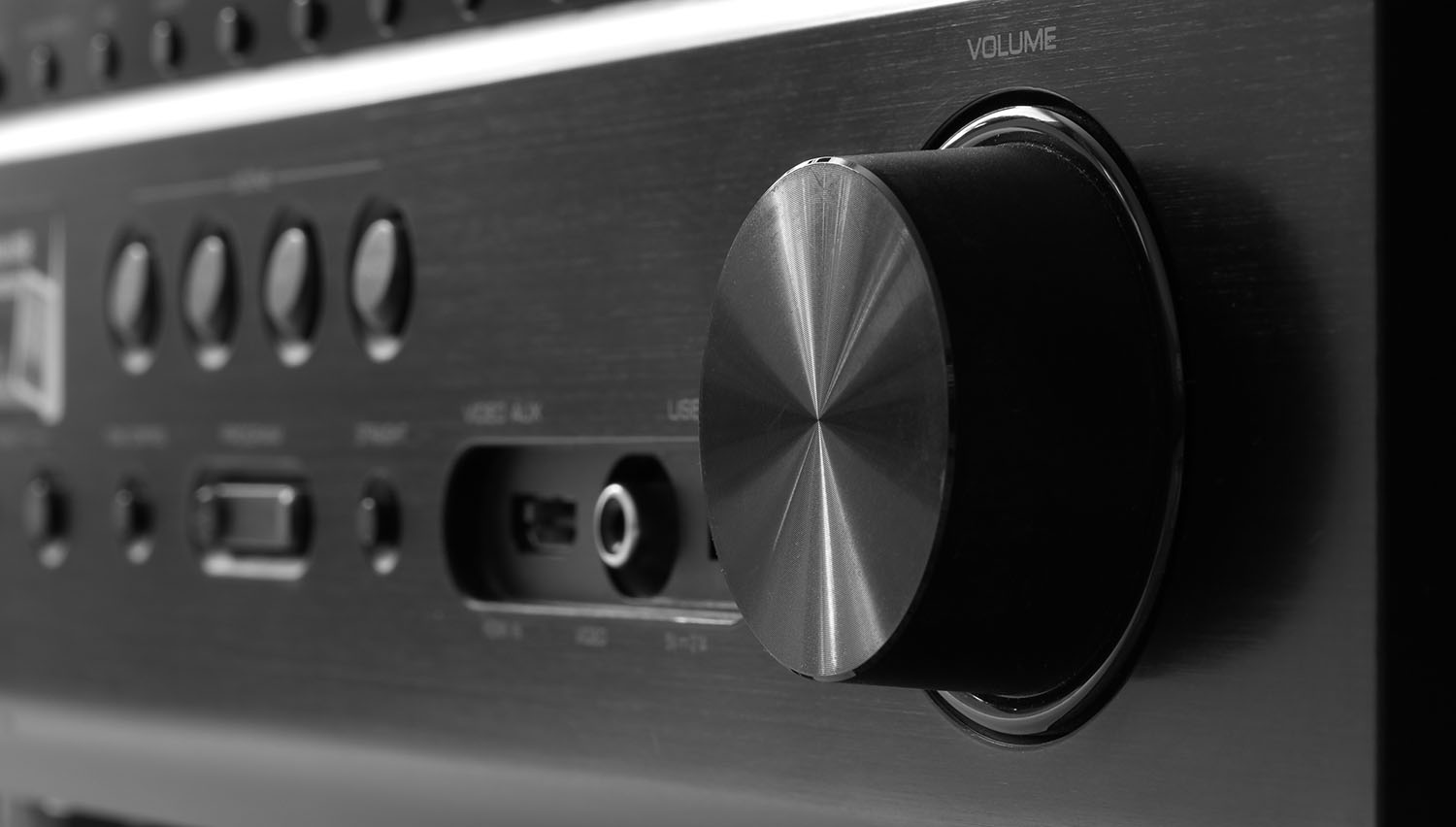Picture movie night with popcorn ready. The screen glows, the room dims, and the sound seems to come from all around. That illusion is not an accident. An AV receiver sits at the center of the system, connects every device, decodes the soundtrack, powers the speakers, and passes clean video to the display. Think of it as the control room for your living room.
A short definition first
An AV receiver is the main hub for a home theater. Sources such as a streaming box, a game console, or a disc player plug into it. The receiver decodes the audio formats, amplifies the signal for each speaker, and passes video to the television or projector through one HDMI output. One box manages the entire show.
Why not rely on the television or a soundbar
Televisions keep getting prettier, yet their speakers live in a slim cabinet. That limits clarity, scale, and bass. Soundbars deliver a fast upgrade, although they cannot match the separation, expandability, and dynamic headroom of real speakers driven by a receiver. A receiver lets you start modestly, then build. Begin with left, right, center, and a subwoofer. Add surround speakers when space allows. Bring in height speakers for Dolby Atmos when ready. The path forward stays open.
What the receiver actually does
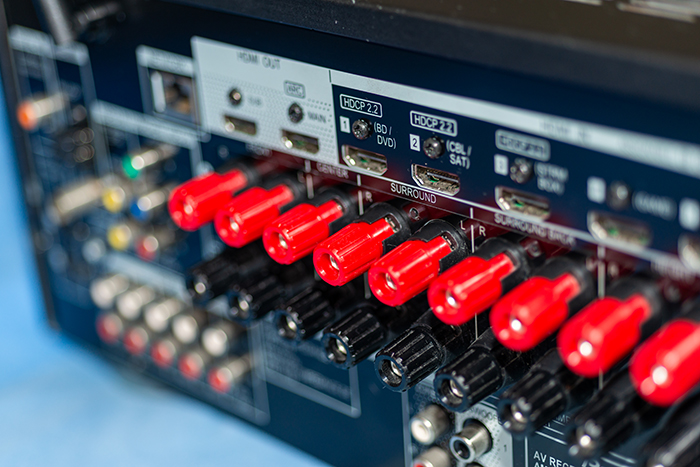
Acts as a master switch.
Every device connects to the receiver. Choose an input like Game, Stream, or Disc and the receiver routes video to the display and audio to the speakers. Cables stay organized, daily use becomes simple, and you avoid weird compatibility issues between devices.
Translates modern formats
Movies and games often carry Dolby Atmos or DTS X. These formats contain information about where each sound should appear around you and above you. The receiver reads those instructions and assigns them to the speakers you own. Rain feels overhead, a car moves from front to back with convincing motion, and dialog stays locked to the screen.
Provides real power
Speakers do not run on good intentions. They need clean current. The receiver contains multiple amplifier channels, one for each speaker, so voices remain clear at normal listening levels and action scenes hit with ease. Spec sheets can show very large peak numbers, though the more meaningful figure is continuous power into two channels with low distortion. Stable power and good cooling matter more than flashy numerals.
Keeps sound and picture aligned
Lip sync errors ruin immersion. The receiver can delay audio slightly so voices match the movement on screen. Support for ARC and eARC on the HDMI output matters as well. ARC returns audio from the television to the receiver. eARC goes further by carrying higher bitrate formats, including lossless options used on discs and some streaming services, through the same cable. Fewer wires, better sound.
Calibrates for your room
Walls and furniture change how you hear everything. Bass might boom in one seat and vanish in another. Room correction solves much of this. A small microphone plugs into the receiver, quick test tones play through the speakers, and software builds filters that even out the response. Audyssey, Dirac Live, and YPAO are common systems. Names differ, the goal stays the same, tighter bass, clearer voices, and more consistent sound across seats.
Passes modern video features
A current receiver will pass 4K video, HDR formats, and often support for 8K on select inputs. Gamers should check for 4K at one hundred twenty frames per second, Variable Refresh Rate, and Auto Low Latency Mode. Those features reduce tearing and lower lag on newer consoles and gaming PCs. Non gamers still benefit from broad compatibility with future sources and displays.
Enables upgrades without starting over
Many receivers support two subwoofer outputs for smoother bass across the room. Zone two can drive speakers on a patio or in a kitchen. Preamp outputs allow the addition of external power amps later. Wireless multiroom options tie in whole home audio. Buy once, grow over time.
RELATED: Denon AVR-X2800H Review
Making sense of channel counts
The numbers look cryptic until you view them as a recipe. A label like 5.1.2 breaks down neatly. The first number represents ear level speakers around you. The second number represents the subwoofer channel. The third number, when present, represents height speakers for Atmos. A 3.1 layout uses left, right, center, and a subwoofer. A 5.1 layout adds two surrounds for wraparound effects. A 5.1.2 layout adds two height speakers for overhead cues. A 7.1.4 layout adds rear surrounds and four height speakers for a serious cinematic bubble.
Understanding the ports you will actually use
HDMI inputs take your sources and carry both video and audio. The HDMI output labeled ARC or eARC connects to the television or projector. Binding posts for speakers accept bare wire or banana plugs, just match labels for front, center, surround, and so on. Subwoofer outputs feed one or two powered subs. A phono input supports turntables with a moving magnet cartridge. Optical and coaxial digital inputs help with older devices. Preamp outputs appear on higher end models and support external amplification.
Which models make sense right now
Starter pick for most rooms, Denon AVR S970H. This seven point two channel model brings clean amplification, eARC, and support for 8K video on select HDMI inputs. It runs Dolby Atmos and DTS X in a five point one point two layout, handles 4K at one hundred twenty on the right ports, and pairs with the HEOS app for easy streaming. It is a friendly first receiver that still feels current as you add speakers.
Great all rounder with strong gaming support, Yamaha RX V6A. Yamaha’s 7.2 channel receiver passes 4K at one hundred twenty, supports VRR and ALLM on its newer HDMI inputs, and includes YPAO room correction. MusicCast brings multiroom streaming and simple app control. Owners who game on recent consoles get smooth motion, while movie fans keep modern HDR formats and eARC in the mix.
Value choice for PS5 and Xbox users, Sony STR AN1000. Sony’s seven point two channel unit supports 4K at one hundred twenty and eARC, and adds a neat trick with 360 Spatial Sound Mapping. That feature can create convincing phantom speakers when placement is tricky. It is a tidy pick when you want modern gaming features and an easy setup flow.
Step up for serious home theater, Onkyo TX RZ50. Onkyo builds in Dirac Live room correction from day one, a rarity at the price. The receiver offers nine amplified channels for layouts like 5.1.4, and it carries the gaming features you expect. Movie lovers gain better bass integration and imaging through Dirac. Open plan rooms and irregular layouts benefit the most.
Flexible enthusiast platform, Denon AVR X3800H. Denon’s nine channel model processes up to eleven point four, so you can add external amps later. It carries multiple 8K capable HDMI inputs, supports the major 3D audio formats, and allows an optional Dirac Live upgrade if you want to push calibration further than Audyssey. That mix makes it a smart base for a long term system that can grow from five point one point two today to seven point one point four over time.
|
$1,399.99
|
$1,048.00
|
$799.95
|
$817.81
|
How to choose among them
Start with the room. Size, seating distance, and layout tell you how many speakers make sense. A small living room can sound amazing with a three point one or five point one setup. Larger rooms benefit from extra surround channels and a second subwoofer for smoother bass.
Move next to features
- Gamers should confirm support for 4K at one hundred twenty, VRR, and ALLM on the inputs they plan to use.
- Streamers should look for reliable Wi Fi, a clear app, and voice control only if that fits daily habits.
- Vinyl listeners may want a phono input.
- Tinkerers who plan to expand should favor models with preamp outputs and more amplifier channels.
Consider the room correction tier
Even basic versions help. Tough rooms, open floor plans, or multiple seats gain the most from stronger systems that correct time alignment and frequency issues more precisely.
Check the number of amplified channels
A 7 channel receiver can operate a 5.1.2 system with two height speakers. Moving to 7.1.4 often requires more channels or external amplification. Plan the destination, then select enough channels to reach it.
A simple setup plan
Place the front left and right speakers about as far apart as the distance from your seat to the screen wall, then toe them in slightly. Position the center speaker directly above or below the screen and aim it at ear level. Start the subwoofer in a front corner for solid output, then fine tune later. Put the surrounds to the sides or a little behind the main seat, slightly above ear height. Height speakers go over the fronts and a bit forward for a five point one point two layout, or use in ceiling speakers a little in front of the listener positions.
Run the setup wizard. The receiver will guide you through connecting the microphone, measuring one or more seats, and saving the filters. After calibration, set all speakers to small, then set an initial crossover near eighty hertz for most speakers. That setting moves deep bass to the subwoofer where it belongs. Adjust the subwoofer level so it supports the action without overpowering voices. Small changes in placement and settings produce big gains.
Mistakes to avoid
Chasing power ratings without context leads to disappointment. Real world improvements come from better room correction, smarter speaker placement, and a capable subwoofer. Mounting surrounds too high pulls effects away from the action. Keep them just above ear level. Ignoring the center channel hurts clarity. A good center speaker, placed well, carries most dialog and keeps long movies comfortable to follow. Skipping the microphone routine leaves easy performance on the table. Run it, then trust your ears for minor tweaks.
A quick decision guide
Seek simple but serious sound, begin with 3.1. Crave wraparound effects, choose five point one. Want overhead motion and a bigger sense of space, aim for five point one point two or higher. Play on recent consoles, verify the HDMI gaming features. Plan to expand, select a model with preamp outputs and enough channels for the future layout.
The bottom line
An AV receiver is the heart and brain of a real home theater. It connects every source, decodes modern soundtracks, powers the speakers with clean authority, corrects for room quirks, and sends pristine video to the display. Start with the room you have, choose the features you will use now, and select a channel count that matches your goal. Run the calibration, make a few careful adjustments, then sit back as the first thunderclap rolls across the ceiling and the room finally feels like a theater.
Teksignal.com participates in the Amazon Services LLC Associates Program, an affiliate advertising program designed to provide a means for sites to earn advertising fees by advertising and linking to Amazon.com

